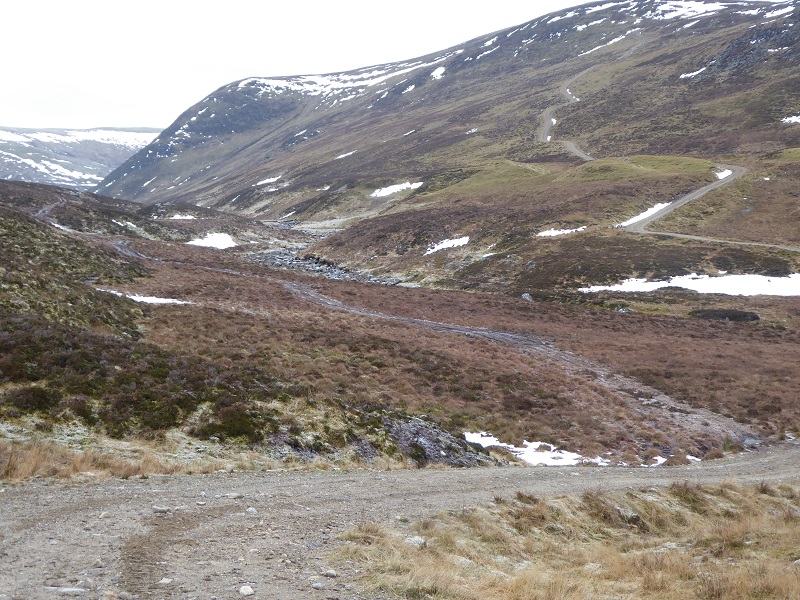
Following my post questioning what the Cairngorms National Park Authority was doing about the unlawful hill track leading onto Carn Leth Choin in upper Glen Banchor, west of Newtonmore (see here), I wrote to the Cairngorms National Park Authority. On 8th March (I have been in Norway in-between) I received this response from Murray Ferguson:
“Concerns about the track at Carn Leth Choin, Cluny Estate were brought to CNPA’s attention in 2014 and the CNPA raised the issue with Highland Council and Scottish Natural Heritage who had both been involved at earlier stages. Highland Council had previously determined that a lower section of the track was permitted development for agricultural purposes and so no further action could be taken. It appears that there was some confusion between SNH and the CNPA/Highland Council at the time over further part of the track and what had been authorised and only in 2015 did all the bodies come to understand the issues properly. A site visit was undertaken with SNH and Highland Council in October 2015.
Following the site visit, SNH undertook to pursue the previous owner of the estate on the grounds that the track was a breach of The Nature Conservation (Scotland) Act 2004. The case was subsequently investigated by Police Scotland’s Wildlife Crime team and CNPA were advised to hold off our own investigations while the criminal investigations were undertaken. Police Scotland concluded that there was insufficient evidence to pursue prosecution.
This was reported to the CNPA in June 2016 and we re-opened our investigation in July 2016.The CNPA are currently in dialogue with the estate’s representatives and Scottish Natural Heritage about restoration of ground and mitigation of impacts and a meeting is taking place soon that our Head of Planning will attend. If action is not taken voluntarily by the estate in the next few months then the CNPA will move to take formal action.”
I believe this response is extremely welcome. It helps explain the background and makes it very clear that the CNPA is taking this issue seriously (and I would have to say is quite a contrast to the way in which the Loch Lomond and Trossachs National Park responds to concerns which I have raised with them about hill tracks). I believe though its worth considering some of the detail and the implications.
Commentary
One of the problem with the preventing unlawful hill tracks, such as the one onto Carn Leth Choin, is that existing tracks have not been clearly mapped by planning authorities, including our National Parks. This makes it very difficult for Planning Authorities to establish when extensions have taken place and whether they should have come under the Prior Notification rules which came into force in December 2014 (this has been a problem for the CNPA on Deeside where the Dinnet Estate claimed its track extensions were completed prior to the new rules). In this case it has led to delays because its not been absolutely clear which section of track was agreed to by Highland Council as a permitted development. The solution to this problem was demonstrated by Kincardine and Deeside Council over 20 years ago when they marked the end points of all hill tracks on their Local Plan maps – a precedent that our National Parks should now follow.
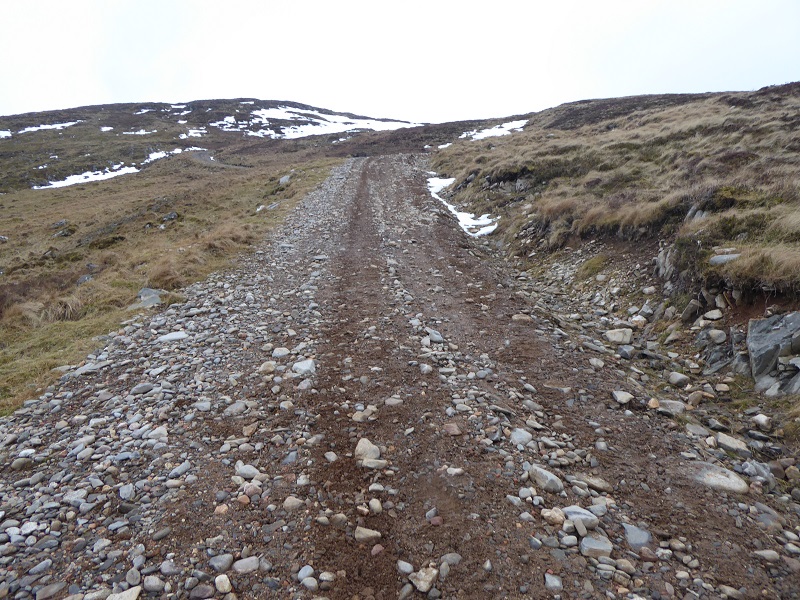
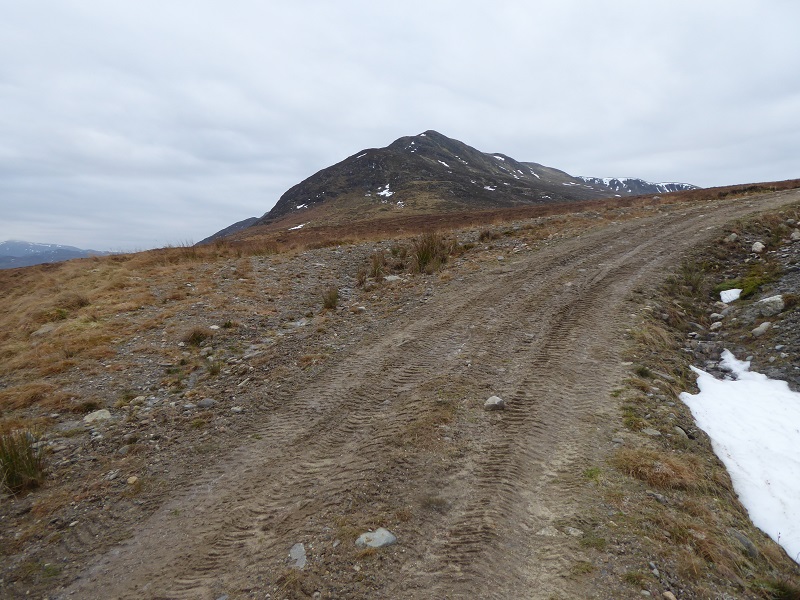
While it can be difficult for Planning Authorities to prove that a track is NOT for agricultural purposes and therefore not a permitted development, in this case I believe Highland Council Planning Department made a serious mistake. Soon after crossing the Allt Madagain (top photo) the track enters the Monadliath Site of Special Scientific Interest and any track construction with this protected area was an “Operation Requiring Consent” from SNH:
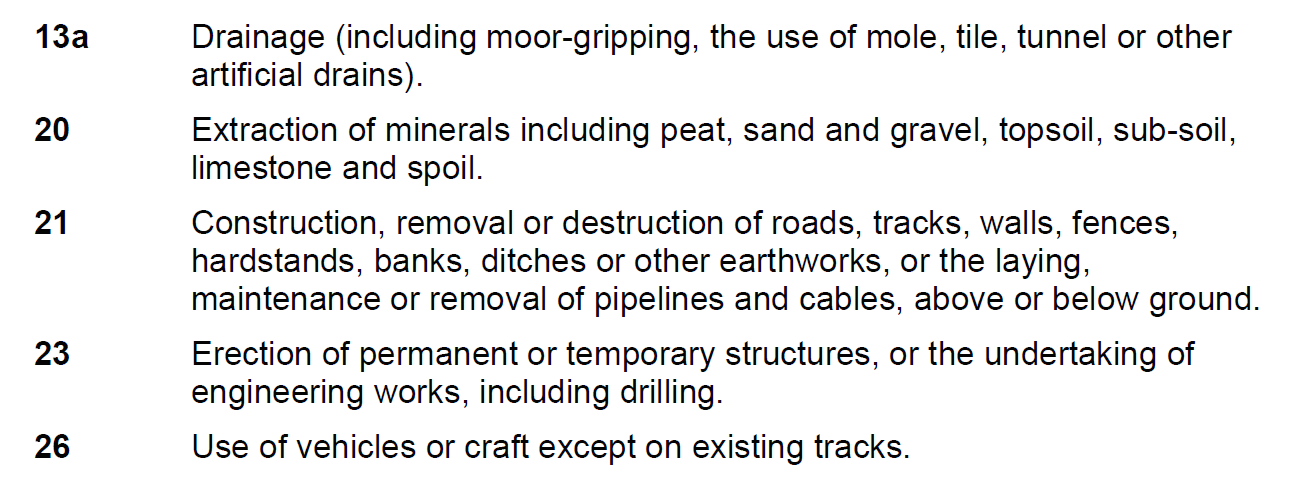
Its not clear from the CNPA response if Highland Council planning department checked with SNH before agreeing to the lower part of the track as a permitted development as they are supposed to do for all developments within protected areas. If they did do so, there are some obvious questions that need to be asked about why SNH agreed to this. If Highland Council failed to do so that would have made it very difficult for SNH to take action subsequently.
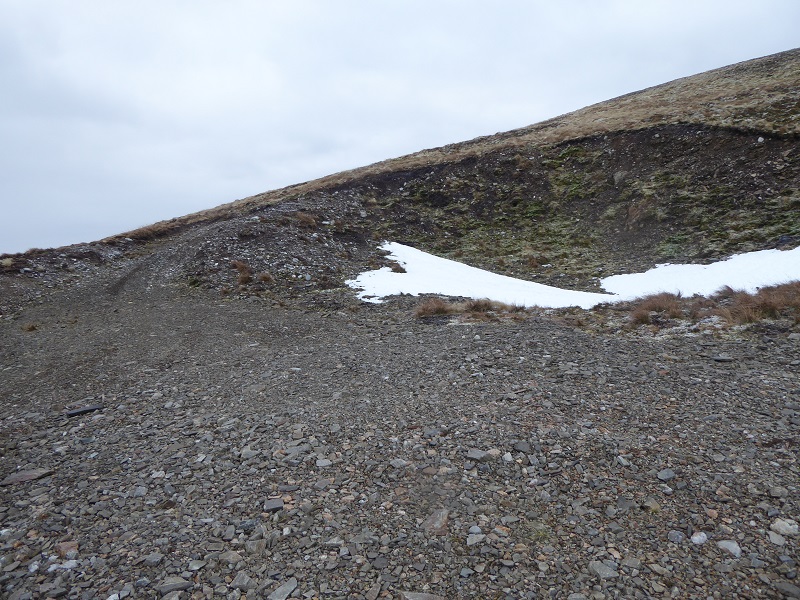
In my view this was a serious planning failure. The lower section of track is too steep and is already eroding away. The landscape scar can only get worse. In this case this is not the fault of the CNPA as they can only “call-in” development that their constituent Councils and Planning Authorities have identified as requiring planning permission.
The fact that SNH referred the construction of the new section of track that leads to the summit of Carn Leth Choin to Police Scotland is significant. Breach of the Operations Requiring Consent is a criminal offence and the evidence shows that this clearly happened in this case: the photos below show extraction of materials, road construction and use of vehicles all of which needed permission. It would be in the public interest to know why Police Scotland decided not to prosecute in this case – it would have sent a clear signal to landowners all over Scotland of the consequences of ignoring the law governing protected areas. Its difficult to avoid the suspicion that as with raptor persecution Police Scotland treat landowners differently to the rest of the population – as being above the law.

Taking what the CNPA has said at face value, there are serious challenges with restoring this track. The material that forms the track needs to be returned to the “borrow pits” from which it was sourced.
 I would suggest this material, which appears to have been simply dumped on existing vegetation (which was protected – its montane heath) cannot simply be removed by heavy machinery because that will simply further damage the ground underneath. The final removal of aggregate and restoration of the ground surface both beneath the track and over the borrow pits once the material has been replaced there will need to be by hand. That will require a skilled workforce which at present does not really exist because there has been no attempt to restore any hill tracks since NTS acquired Mar Lodge Estate and restored the Beinn a Bhuird track.
I would suggest this material, which appears to have been simply dumped on existing vegetation (which was protected – its montane heath) cannot simply be removed by heavy machinery because that will simply further damage the ground underneath. The final removal of aggregate and restoration of the ground surface both beneath the track and over the borrow pits once the material has been replaced there will need to be by hand. That will require a skilled workforce which at present does not really exist because there has been no attempt to restore any hill tracks since NTS acquired Mar Lodge Estate and restored the Beinn a Bhuird track.
Its time for the CNPA to be resolute and there are welcome signs that in this case they might be so. They only need to tackle successfully one unlawful hill track in the National Park and all landowners will start to take note of the risks of failing to comply with the law.
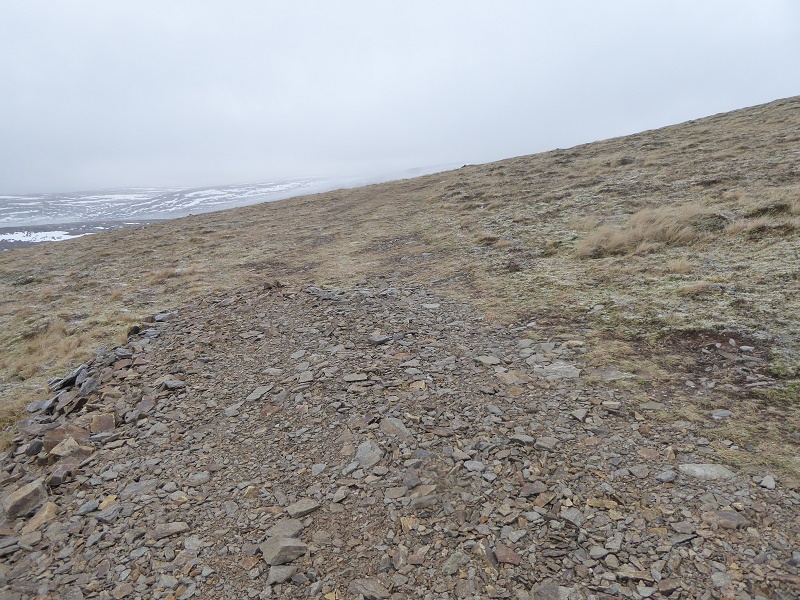

I’ve recently walked this track. It was my family that sold Cluny to Angelil.
When I first saw the initial track upto the saddle, I, not wishing to offend my neighbour, raised the issue through the MCofS Access Officer, who, eventually came back and told me that SNH had agreed this invasion of the SSSI as better than the Argo Cat tracks on the other side of the hill, for stalking, not agricultural purposes.
With the SNP’s vaunted “bonfire of the quangos” the Deer Commission was absorbed into SNH. (The meetings of the Deer Round Table, funded with bacon butties, by the Commission were valuable opportunities for all sides of the deer world to come together, but that is old history, now, alas!) The SNH approach to deer and stalking has changed a long way. Numbers must be reduced!
There was, at least 60 years ago, visible, on the top of the ridge of Carn an Lethcoin, an old track for wheeled vehicles, which gave access onto the open flats above Loch Dubh, and seemed to peter out on the way down. Angelil’s extension of his SNH authorised track met up with, and upgraded this old historic track.
I don’t like new hill tracks!
Every time I drive down the A9 from Drumochter I am aghast at the tracks on the other side of the valley, outwith NP & SSSI, which are certainly not for Forestry or Agriculture, and to which, apparently, the Planning authorities have turned a blind eye. Ditto the ugly bulldozed tracks up Glen Dessary which that Laird told the Planning Office in Ft W, were for a “StatutoryCull”!
I am clear that this offending track does allow access to a large area where deer, in pursuit of the modern heavy cull policy, can be killed & extracted.
I fear that CNPA, SNH, Highland Council are now using the rumour (probably true) that the new owner of Cluny is Qatari, and therefore fabulously rich, as an example. This, of course, ignores the probability that full restoration is impossible.
I think that the powers that be have chosen the wrong Laird to make a spiteful example of. (Don’t get me wrong: I am no fan of the new owner of Cluny, who has shewn neither me nor the estate community the slightest consideration – I’m concerned with reality, common sense and Cluny)